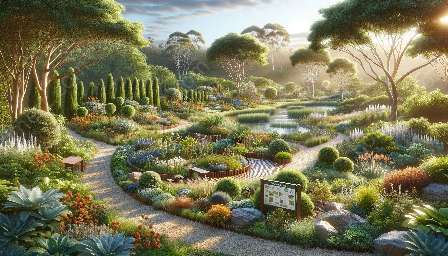Conservation is a critical practice that aims to protect and preserve the natural environment, including indigenous plants. It involves the responsible use of natural resources and the implementation of sustainable practices to ensure the health and longevity of ecosystems. In the context of gardening and landscaping, conservation plays a vital role in promoting the growth and preservation of indigenous plant species, contributing to a more diverse and resilient environment.
Importance of Conservation
Conservation is essential for maintaining the delicate balance of ecosystems and preserving biodiversity. By safeguarding indigenous plants and their habitats, conservation efforts help to support the overall health of the environment. Native plants play a crucial role in providing food and shelter for wildlife, promoting soil health, and contributing to the overall stability of ecosystems. Additionally, preserving indigenous plants is essential for maintaining a region's unique natural heritage and cultural identity.
Conservation and Indigenous Plants
Conserving indigenous plants involves protecting and restoring their natural habitats, as well as integrating them into gardening and landscaping practices. By incorporating native plant species into outdoor spaces, individuals can contribute to the conservation effort while reaping the benefits of sustainable and low-maintenance landscaping. Indigenous plants are well-adapted to local environmental conditions, making them resilient and beneficial for supporting local wildlife and ecosystem health.
Benefits of Indigenous Plants in Gardening and Landscaping
Indigenous plants offer numerous benefits for gardening and landscaping, including:
- Biodiversity: Native plants support a diverse array of wildlife, including insects, birds, and mammals, contributing to overall ecosystem health.
- Sustainability: Indigenous plants require less water, fertilizer, and maintenance compared to non-native species, making them ideal for sustainable landscaping practices.
- Resilience: Native plants are well-suited to local environmental conditions, making them more adaptable and resilient to changes in climate and soil conditions.
- Low Maintenance: Once established, indigenous plants generally require minimal care, reducing the need for chemical inputs and labor-intensive maintenance.
- Environmental Preservation: By using indigenous plants, individuals can participate in the preservation of local ecosystems and contribute to the conservation of native biodiversity.
Sustainable Gardening and Landscaping Practices
Integrating conservation principles into gardening and landscaping practices is essential for promoting sustainability and biodiversity. Some key sustainable practices include:
- Water Conservation: Utilize efficient irrigation methods such as drip irrigation and rainwater harvesting to minimize water usage.
- Soil Health: Implement organic mulching and composting techniques to improve soil fertility and structure, reducing the need for chemical fertilizers.
- Native Plant Integration: Incorporate indigenous plants into landscape designs to enhance biodiversity and support local ecosystems.
- Wildlife Habitat Creation: Design gardens and landscapes to provide food, shelter, and nesting sites for local wildlife, contributing to ecological balance.
- Chemical-Free Maintenance: Minimize the use of synthetic pesticides and herbicides, opting for natural and organic pest control methods to protect biodiversity.
- Educational Outreach: Promote awareness and appreciation for conservation and indigenous plants through educational initiatives and community engagement.
Conclusion
Conservation and sustainable gardening go hand in hand, with indigenous plants serving as valuable assets for creating resilient, biodiverse landscapes. By understanding the importance of preserving native species and implementing sustainable practices, individuals can contribute to a healthier environment and promote the long-term well-being of ecosystems. Through the integration of conservation principles, gardening and landscaping enthusiasts can create beautiful outdoor spaces that not only enhance the aesthetic appeal but also support the preservation of indigenous plants and local biodiversity.

